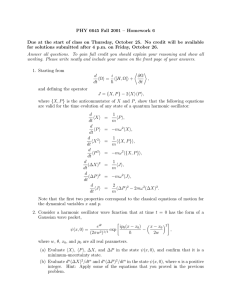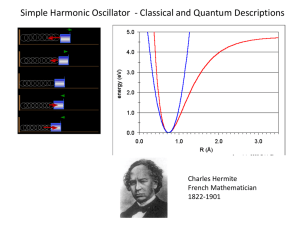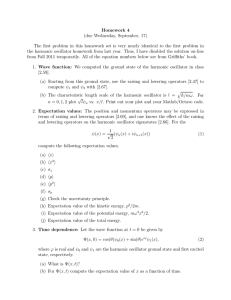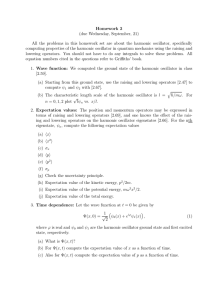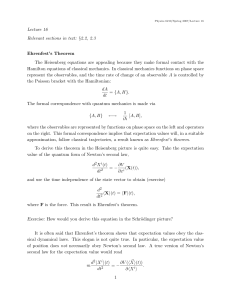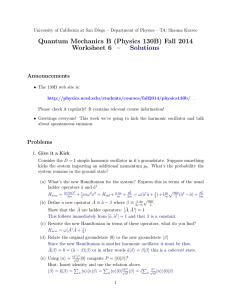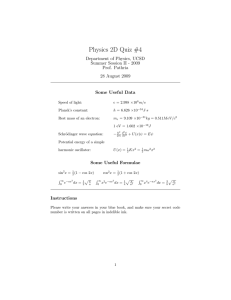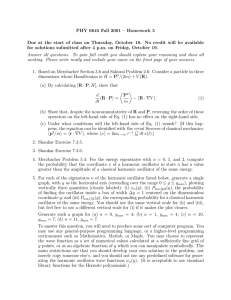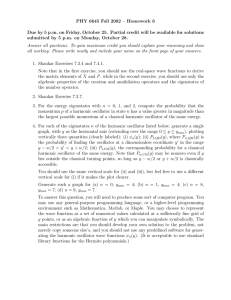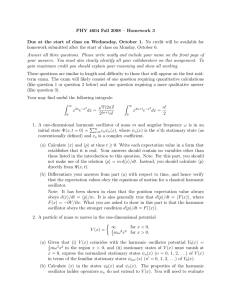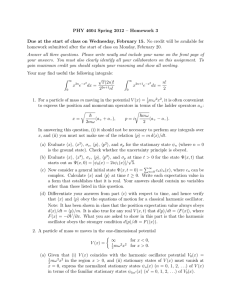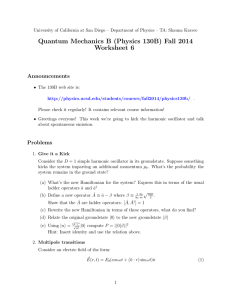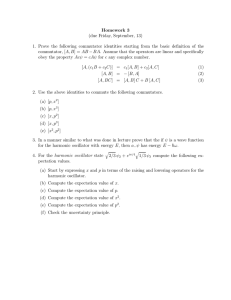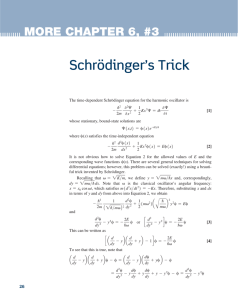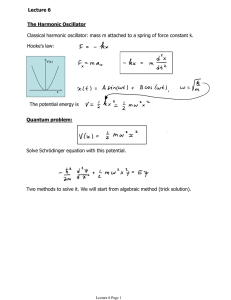PHY 6645 Fall 2002 – Homework 7
advertisement
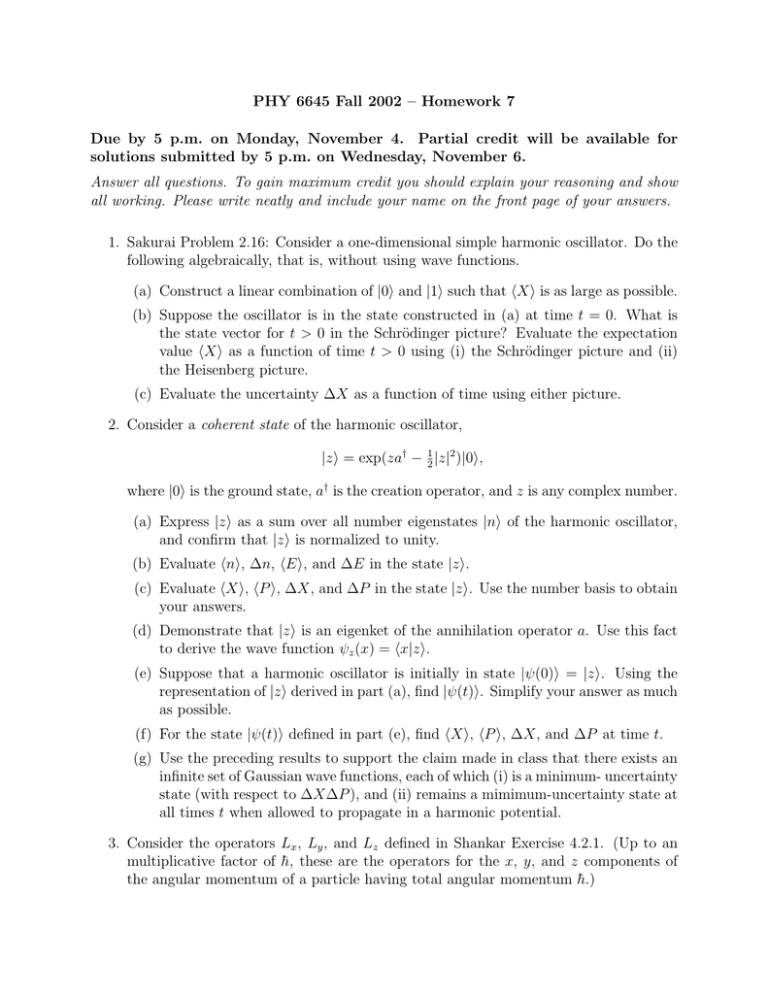
PHY 6645 Fall 2002 – Homework 7 Due by 5 p.m. on Monday, November 4. Partial credit will be available for solutions submitted by 5 p.m. on Wednesday, November 6. Answer all questions. To gain maximum credit you should explain your reasoning and show all working. Please write neatly and include your name on the front page of your answers. 1. Sakurai Problem 2.16: Consider a one-dimensional simple harmonic oscillator. Do the following algebraically, that is, without using wave functions. (a) Construct a linear combination of |0i and |1i such that hXi is as large as possible. (b) Suppose the oscillator is in the state constructed in (a) at time t = 0. What is the state vector for t > 0 in the Schrödinger picture? Evaluate the expectation value hXi as a function of time t > 0 using (i) the Schrödinger picture and (ii) the Heisenberg picture. (c) Evaluate the uncertainty ∆X as a function of time using either picture. 2. Consider a coherent state of the harmonic oscillator, |zi = exp(za† − 12 |z|2 )|0i, where |0i is the ground state, a† is the creation operator, and z is any complex number. (a) Express |zi as a sum over all number eigenstates |ni of the harmonic oscillator, and confirm that |zi is normalized to unity. (b) Evaluate hni, ∆n, hEi, and ∆E in the state |zi. (c) Evaluate hXi, hP i, ∆X, and ∆P in the state |zi. Use the number basis to obtain your answers. (d) Demonstrate that |zi is an eigenket of the annihilation operator a. Use this fact to derive the wave function ψz (x) = hx|zi. (e) Suppose that a harmonic oscillator is initially in state |ψ(0)i = |zi. Using the representation of |zi derived in part (a), find |ψ(t)i. Simplify your answer as much as possible. (f) For the state |ψ(t)i defined in part (e), find hXi, hP i, ∆X, and ∆P at time t. (g) Use the preceding results to support the claim made in class that there exists an infinite set of Gaussian wave functions, each of which (i) is a minimum- uncertainty state (with respect to ∆X∆P ), and (ii) remains a mimimum-uncertainty state at all times t when allowed to propagate in a harmonic potential. 3. Consider the operators Lx , Ly , and Lz defined in Shankar Exercise 4.2.1. (Up to an multiplicative factor of h̄, these are the operators for the x, y, and z components of the angular momentum of a particle having total angular momentum h̄.) (a) Show that these operators satisfy the commutation relations [Li , Lj ] = iεijk Lk , where εijk is the Levi-Civita symbol (defined, e.g., on page 319 of Shankar). (b) Calculate ∆Lx , ∆Ly , and ∆Lz in the states 1 |ψ1 i = 0 , 0 0 1 |ψ2 i = √ 1 . 2 1 (c) Calculate ∆Ly ∆Lz in the states |ψ1 i and |ψ2 i defined above, and check that the appropriate uncertainty relation ∆Ω ∆Λ ≥ 12 |h[Ω, Λ]i| is obeyed in each case.
